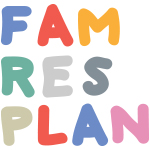Edukacijsko-rehabilitacijski
fakultet Sveučilišta u Zagrebu
[ Specifična obilježja
obitelji u riziku: doprinos planiranju
kompleksnih intervencija ]
III. International Congress of Clinical and Health Psychology of Children and Adolescents, AITANA SEVILLA
Četvrtak, 30. studenoga, 2017.
Miranda Novak, članica FamRes tima, u studenom 2017. godine aktivno je sudjelovala na 3. Međunarodnoj konferenciji kliničke u zdravstvene psihologije djece i adolescenata u Sevilli, Španjolska. Usmeno je predstavila rad “MEASURING FAMILY RESILIENCE: HIGH RISK V.S. GENERAL POPULATION YOUTH“ koji je pripremalo nekoliko članica tima, Novak, M., Ferić, M., Kranželić, V., Mihić, J. U radu je iskorišten dio podataka iz FamRes pilot istraživanja te je rizična populacija djece I adolescenata kojima je izrečena neka mjera CZSS uspoređena s populacijom uz redovne populacije.
Poveznica na program konferencije je ovdje .
Poveznica na knjigu sažetaka i prezentacija .
Sažetak:
Resilience is a process of negotiating, managing and adapting to significant sources of stress, trauma or risk. Assets and resources within the individual, family and environment facilitate this capacity for adaptation and ‘bouncing back’, achieving good outcome in the face of adversity (Windle, 2011). Research of family resilience is relatively new while its conceptualization and operationalization is challenging. Literature also adds to confusion since family resilience is defined as a process while in practical research, family members are asked upon their individual perception of family protective factors.
Objective of this paper is twofold: 1) to determine the level of family resilience in high-risk adolescent sample and general population youth and 2) to compare the perception of family resilience in two subsamples. Family resilience was measured with the Family resilience scale, adapted from FACES IV (Olson, Gorall, Tiesel, 2004) and Sixbey (2005) constructed to measure three separate family resilience dimensions according to Walsh: family communication and problem solving, family belief system and family organization. First part of the study was conducted in a subsample of 120 high-risk adolescents that were included in the treatment of social welfare centers, usually because of their behavioral disorders, problems with violence, substance abuse or violation of the law. Second part of the study included 220 high-school students that were attending regular high-school system.
Exploratory factor analysis was conducted and results have shown satisfactory factor structure and three separate dimensions of family resilience scale in both subsamples. General population youth perceives family resilience quite high, with special accent on family organization while youth in risk reports upon high family belief system and lower family organization than general population. Results are indicating that work with adolescents should also comprise the family component in order to make the preventive interventions more effective.

